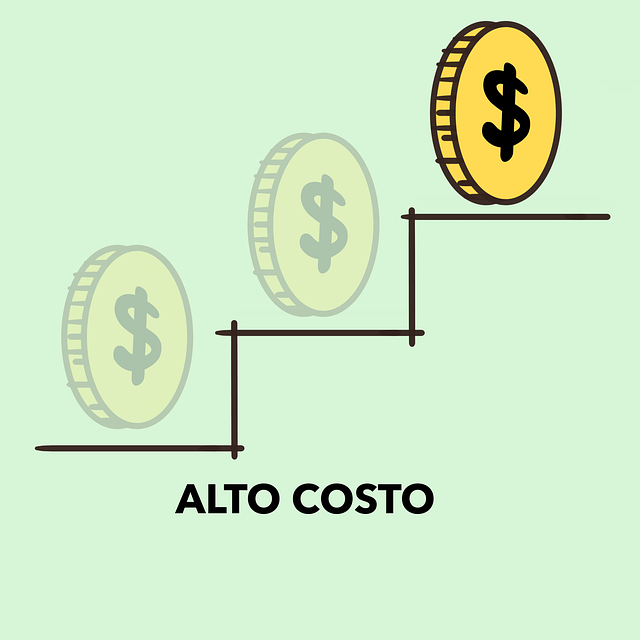Semaglutide, a cutting-edge type 2 diabetes medication, offers unique benefits over alternatives. Its long-term efficacy and once-weekly injection reduce costs compared to oral drugs or frequent insulin injections. Understanding brand vs. generic pricing, dosage frequency, and insurance coverage is key to navigating the cost of semaglutide effectively. Despite higher upfront costs, its sustained effectiveness and potential for treating multiple metabolic conditions make it a cost-saving option in the long run. Affordable alternatives exist through patient assistance programs, copay cards, generics, pharmacy negotiations, and international purchases.
“Unraveling the cost of semaglutide in diabetes management offers a comprehensive view of its economic landscape. This article delves into the competitive pricing of semaglutide, comparing it with alternative medications. We explore generics and brand names, examining the impact of dosage on expenses and patient out-of-pocket costs. Insurance coverage policies are dissected to understand their influence on affordability. Additionally, we analyze long-term savings and provide insights on accessing semaglutide economically, shedding light on the financial considerations for patients and healthcare providers.”
Understanding Semaglutide's Place in Diabetes Management

Semaglutide, a novel medication for diabetes management, has emerged as a game-changer in the treatment of type 2 diabetes. Its unique mechanism of action mimics the effects of the natural hormone GLP-1, which promotes insulin secretion and suppresses glucagon release, leading to improved glycemic control. In comparison with other diabetes medications, semaglutide offers several advantages that influence its cost-effectiveness.
The cost of semaglutide is a key consideration for healthcare providers and patients alike. While it may be more expensive upfront, its long-term benefits include reduced rates of hypoglycemia and weight loss, which can lower the overall treatment burden. Additionally, studies have shown that semaglutide can lead to significant improvements in HbA1c levels, often with fewer injections compared to other GLP-1 receptor agonists, potentially reducing healthcare costs associated with administration and patient compliance. Understanding these factors is crucial when navigating the cost of semaglutide within the broader context of diabetes management.
Exploring Semaglutide's Cost Structure Compared to Alternatives

Exploring Semaglutide’s Cost Structure Compared to Alternatives
The cost of semaglutide, a cutting-edge medication for type 2 diabetes management, has sparked interest among patients and healthcare providers alike. When comparing the cost of semaglutide to other diabetes medications, several factors come into play. One key consideration is the dosage frequency; semaglutide’s once-weekly injection may offer cost savings compared to daily pill regimens, as it reduces overall medication expenses over time. Additionally, while initial setup costs for semaglutide therapy might be higher due to specialized medical supplies, long-term data suggests that its efficacy in weight management and glycemic control can lead to significant reductions in healthcare expenditures associated with diabetes complications.
Alternative medications have their own pricing dynamics. Traditional oral hypoglycemic agents are generally more affordable upfront but may require frequent refills and could contribute to higher long-term costs due to potential side effects and reduced efficacy over time. Insulin therapy, another common approach, can vary widely in cost based on the type of insulin and delivery method chosen. In contrast, semaglutide’s relatively consistent pricing structure across different formulations provides patients with a predictable expense, making it an attractive option for those seeking financial clarity in their diabetes management regimen.
Analyzing Generics and Brand Names: Semaglutide vs. Competitors

When comparing the cost of semaglutide with other medications, understanding the distinction between generic and brand names is crucial. Semaglutide, available under various brand names like Ozempic and Rybelsus, is a novel drug for type 2 diabetes management. While brand-name medications often come at a premium due to research and development costs, generics offer significant price reductions after patents expire. This dynamic can lead to substantial savings for patients, as generics provide identical active ingredients without the hefty price tag associated with brand names.
In the competitive landscape of diabetes treatments, semaglutide faces several competitors like liraglutide (Victoza) and dulaglupeg (Trulicity). When analyzing these medications, the cost of semaglutide often stands out due to its specific benefits and delivery methods. However, patients should also consider the overall effectiveness, side effects, and patient preferences when deciding between brand-name semaglutide or its generics, ensuring they receive optimal diabetes management while navigating healthcare costs.
Impact of Dosage on Expenses: A Closer Look

The cost of semaglutide can vary significantly depending on the dosage and prescription requirements. One key factor is the frequency of administration; semaglutide is typically administered once weekly, which can impact overall expenses compared to medications with more frequent or varying dosages. Higher doses may also lead to increased costs, as patients often require tailored prescriptions based on their individual needs and responses.
Moreover, understanding how dosage influences pricing is essential for cost-effective treatment decisions. Patients and healthcare providers should consider the specific benefits and potential savings associated with different semaglutide dosage regimens, keeping in mind that an optimal dose may offer better value for money while still delivering effective results.
Patient Out-of-Pocket Expenses: Breaking Down Costs

When comparing the cost of semaglutide with other medications, understanding patient out-of-pocket expenses is crucial. Semaglutide, a semi-synthetic analog of glucagon-like peptide-1 (GLP-1), typically involves higher upfront costs due to its prescription nature and specialized delivery systems, such as injection pens or auto-injectors. However, many health insurance plans offer coverage for these medications, significantly reducing the patient’s out-of-pocket expenditure.
Patients should carefully review their insurance policies to comprehend co-pays, deductibles, and any remaining costs after insurance coverage. Additionally, pharmaceutical companies often provide patient assistance programs or coupons that can further mitigate the financial burden. Breaking down these costs provides a comprehensive view of what patients can expect to pay out of pocket for semaglutide treatment compared with other available medications.
Insurance Coverage and Semaglutide: Navigating Policies

Semaglutide, like many prescription medications, has varying costs depending on factors such as insurance coverage and pharmacy location. Insurance plans play a significant role in determining the out-of-pocket expenses for patients. Some policies cover semaglutide entirely or with minimal copays, while others may require higher co-insurance percentages or deductibles. It’s essential for patients to understand their specific insurance benefits, especially when comparing costs with alternative medications.
Navigating insurance policies can be complex, as different plans have unique terms and conditions. Patients are encouraged to review their policy details, communicate with their insurers, and consult with healthcare providers to optimize cost savings. Additionally, pharmacy programs and patient assistance initiatives offered by pharmaceutical companies can further reduce the cost of semaglutide, making it more accessible to those in need.
Long-Term Savings: Comparing Overall Treatment Costs

When considering the long-term impact, comparing the cost of semaglutide with other medications reveals significant savings potential for patients and healthcare systems alike. While the initial investment in semaglutide treatments might be higher due to brand name and prescription costs, its sustained efficacy offers substantial advantages over alternative options. Semaglutide’s ability to effectively manage diabetes or obesity over extended periods can lead to reduced prescription frequencies and lower overall treatment expenses compared to short-term focused medications with frequent refills or replacement needs.
This cost comparison becomes even more pronounced when considering the potential for comorbidity management. Semaglutide has shown promise in treating various metabolic conditions simultaneously, which could result in substantial long-term savings by addressing multiple health issues through a single therapy. As such, the initial investment in semaglutide treatment may translate into considerable financial benefits during the course of sustained patient care.
Affordable Options: Accessing Semaglutide Economically

Semaglutide, a groundbreaking medication for type 2 diabetes management, has garnered attention for its effectiveness and long-lasting benefits. However, one of the primary concerns among patients is the cost of semaglutide compared to other available options. Despite its relatively high price point, affordable alternatives exist for those seeking cost-effective treatments.
Accessing semaglutide economically can be achieved through various strategies. Many pharmaceutical companies offer patient assistance programs and copayment cards, which significantly reduce the out-of-pocket expenses for eligible individuals. Additionally, generic versions of semaglutide are expected to enter the market in the coming years, potentially offering even lower prices. Patients can also explore negotiation with pharmacies or consider buying medications from overseas, where pricing structures may differ. These options provide a more accessible and affordable path to managing diabetes, ensuring patients have choices that fit their financial needs without compromising on quality care.
